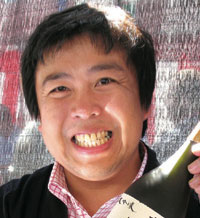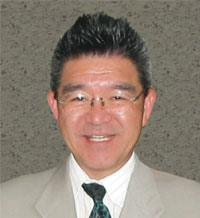What Type of Sake is Nama-zake?
“Nama-zake” (sake not sterilized by heat) refers to sake not pasteurized once from pressing the fermentation mash to shipment, also referred to as “Nama-shu” or “Nama-zake.” According to the Japanese National Tax Agency’s “Standards for Manufacturing Methods and Quality Indication for Sake,” Nama-zake refers to “sake not sterilized by heat after production” and sake not pasteurized, thus labeling such as “refrigeration required” and other caution for consumption is required.
Because Nama-zake is not pasteurized, various enzymes remain in an activated state in the sake with the risk of changes occurring in the stored components, yet characteristic for its fresh flavor exclusive to new sake compared to pasteurized sake. While many of the Nama-zake are shipped after micro-filtration to eliminate general bacteria, some are not filtered at all.
Sake freshly pressed from the fermentation mash is usually cloudy and contains fine sediments (starch, insoluble protein, sake yeast, enzyme, etc.). The sake is left in a cool place to let the sediments settle (to remove the sediments), and filtered further to let the sake become clear like water. Afterwards, the sake is pasteurized and stored (aged) to adjust the sake quality before pasteurizing again, then bottled.
The recently popular “freshly-pressed” sake is not produced using this process, a white and cloudy type of sake just pressed, bottled, and shipped. Because this cloudy sake is not necessarily just pressed, sake with high additional value is referred to as “Arabashiri” (first run) to distinguish from “freshly-pressed” sake.
Also, sake after the first round of sediments are removed is called “first-pressed,” while sake after the second round of sediments are removed is called “second-pressed,” and sediments (sake mixed with sediments) remaining on the bottom of the tank after the “first-pressed” is shipped in some cases as “Ori-zake” or Nigori-zake.” However, even Nigori-zake once pasteurized is no longer Nama-zake, as Nama-zake type Japanese sake are referred to as Arabashiri (first run), freshly-pressed, Nigori-zake, etc., since there are no strict regulations to label these terms other than for Nama-zake.
On the other hand, “Nama-chozoshu” (sake pasteurized only once while bottling) - occasionally confused with Nama-zake - refers to Japanese sake not pressed nor pasteurized before being stored at low-temperatures, but pasteurized only once before bottling. To the contrary, sake not heated once before pressed, stored in a tank, and bottled for shipping is called “Namazume-shu.”
Because Nama-zake is not pasteurized, various enzymes remain in an activated state in the sake with the risk of changes occurring in the stored components, yet characteristic for its fresh flavor exclusive to new sake compared to pasteurized sake. While many of the Nama-zake are shipped after micro-filtration to eliminate general bacteria, some are not filtered at all.
Sake freshly pressed from the fermentation mash is usually cloudy and contains fine sediments (starch, insoluble protein, sake yeast, enzyme, etc.). The sake is left in a cool place to let the sediments settle (to remove the sediments), and filtered further to let the sake become clear like water. Afterwards, the sake is pasteurized and stored (aged) to adjust the sake quality before pasteurizing again, then bottled.
The recently popular “freshly-pressed” sake is not produced using this process, a white and cloudy type of sake just pressed, bottled, and shipped. Because this cloudy sake is not necessarily just pressed, sake with high additional value is referred to as “Arabashiri” (first run) to distinguish from “freshly-pressed” sake.
Also, sake after the first round of sediments are removed is called “first-pressed,” while sake after the second round of sediments are removed is called “second-pressed,” and sediments (sake mixed with sediments) remaining on the bottom of the tank after the “first-pressed” is shipped in some cases as “Ori-zake” or Nigori-zake.” However, even Nigori-zake once pasteurized is no longer Nama-zake, as Nama-zake type Japanese sake are referred to as Arabashiri (first run), freshly-pressed, Nigori-zake, etc., since there are no strict regulations to label these terms other than for Nama-zake.
On the other hand, “Nama-chozoshu” (sake pasteurized only once while bottling) - occasionally confused with Nama-zake - refers to Japanese sake not pressed nor pasteurized before being stored at low-temperatures, but pasteurized only once before bottling. To the contrary, sake not heated once before pressed, stored in a tank, and bottled for shipping is called “Namazume-shu.”
生酒とは、とはどのような日本酒か
「生酒」とは、もろみを搾ってから出荷するまで、一度も火入れ(加熱殺菌)を行なっていない日本酒のことで、「なましゅ」または「なまざけ」と読む。国税庁の「清酒の製法品質表示基準」では、「製成後、一切加熱処理をしない清酒である場合」にこの表示ができると定め、また、殺菌をしていない酒なので、「要冷蔵」など保存もしくは飲用上の注意事項の記載を義務づけている。
生酒は火入れ殺菌をしていないため、酒の中に各種酵素が活性状態で残っており、貯蔵中に成分変化が起こりやすいというリスクがあるが、一般の火入れをした酒に比べて、新酒特有の新鮮な風味を持っているのが特徴だ。一般細菌まで除去できる精密濾過を行なってから出荷するものが多いが、濾過をまったく行なわないものもある。
通常、もろみから搾ったばかりの酒には、まだ細かい滓(でんぶん、不溶性たんぱく質、清酒酵母、酵素など)が混ざっており、白く濁っている。 そこで、冷所に数日間以上静置して滓を沈殿させ(「滓弘き」という)、さらに濾過を行なって完全に清澄にする。その後、火入れをしてから貯蔵(熟成)し、酒質を調整した上で再度火入れを行ない、瓶詰される。
最近流行の「しぼりたて」とは、この工程を経ずに、搾った直後の白濁した酒をそのまま瓶詰して出荷した濁り酒タイプの生酒だが、白濁してるだけで上槽後最初に出てくる酒とは限らないので、付加価値の高い「荒走り」を「しぼりたて」と呼ぶ場合とは区別する必要がある。また、一度 目の滓引きを「一引き」、二度目を「二引き」と呼ぶが、一引き後にタンクの底に残った沈殿物(清酒と滓が混濁したもの)を「おり酒」とか「にごり酒」と称して出荷する場合もある。ただし、濁り酒であっても、一度火入れを行なったものは生酒ではない。 ちなみに、生酒タイプの日本酒には、荒走り、しぼりたて、濁り酒などさまざまな呼び名があるが、これらの名称表示については、生酒の規定以外に厳密な規定があるわけではない。
一方、生酒としばしば混同される「生貯蔵酒」とは、上槽してから火入れをせずに生酒の状態のまま低温貯蔵し、瓶詰する時に一度だけ加熱殺菌を行なった日本酒のことである。反対に、上槽後、貯蔵する前に一度火入れを行ない、瓶詰など出荷時には加熱しない日本酒は「生詰酒」と呼ばれる。
生酒は火入れ殺菌をしていないため、酒の中に各種酵素が活性状態で残っており、貯蔵中に成分変化が起こりやすいというリスクがあるが、一般の火入れをした酒に比べて、新酒特有の新鮮な風味を持っているのが特徴だ。一般細菌まで除去できる精密濾過を行なってから出荷するものが多いが、濾過をまったく行なわないものもある。
通常、もろみから搾ったばかりの酒には、まだ細かい滓(でんぶん、不溶性たんぱく質、清酒酵母、酵素など)が混ざっており、白く濁っている。 そこで、冷所に数日間以上静置して滓を沈殿させ(「滓弘き」という)、さらに濾過を行なって完全に清澄にする。その後、火入れをしてから貯蔵(熟成)し、酒質を調整した上で再度火入れを行ない、瓶詰される。
最近流行の「しぼりたて」とは、この工程を経ずに、搾った直後の白濁した酒をそのまま瓶詰して出荷した濁り酒タイプの生酒だが、白濁してるだけで上槽後最初に出てくる酒とは限らないので、付加価値の高い「荒走り」を「しぼりたて」と呼ぶ場合とは区別する必要がある。また、一度 目の滓引きを「一引き」、二度目を「二引き」と呼ぶが、一引き後にタンクの底に残った沈殿物(清酒と滓が混濁したもの)を「おり酒」とか「にごり酒」と称して出荷する場合もある。ただし、濁り酒であっても、一度火入れを行なったものは生酒ではない。 ちなみに、生酒タイプの日本酒には、荒走り、しぼりたて、濁り酒などさまざまな呼び名があるが、これらの名称表示については、生酒の規定以外に厳密な規定があるわけではない。
一方、生酒としばしば混同される「生貯蔵酒」とは、上槽してから火入れをせずに生酒の状態のまま低温貯蔵し、瓶詰する時に一度だけ加熱殺菌を行なった日本酒のことである。反対に、上槽後、貯蔵する前に一度火入れを行ない、瓶詰など出荷時には加熱しない日本酒は「生詰酒」と呼ばれる。




